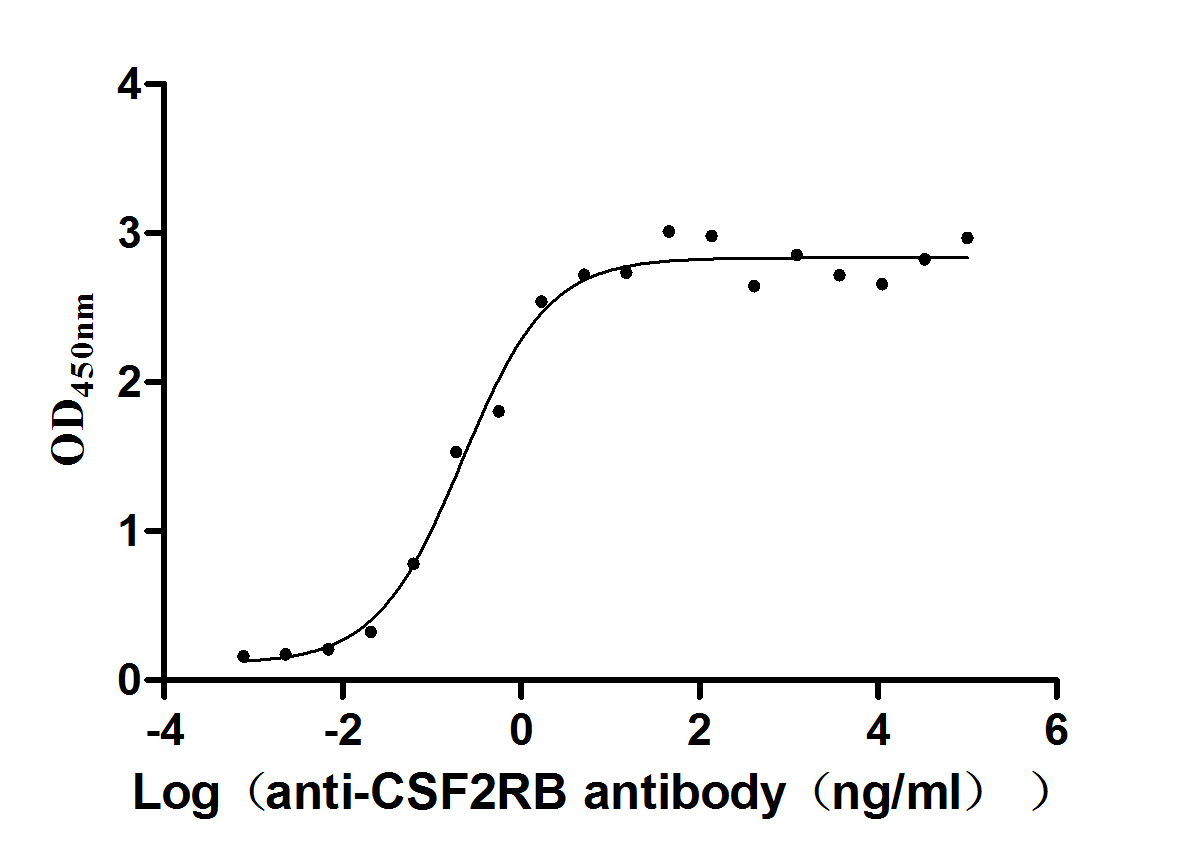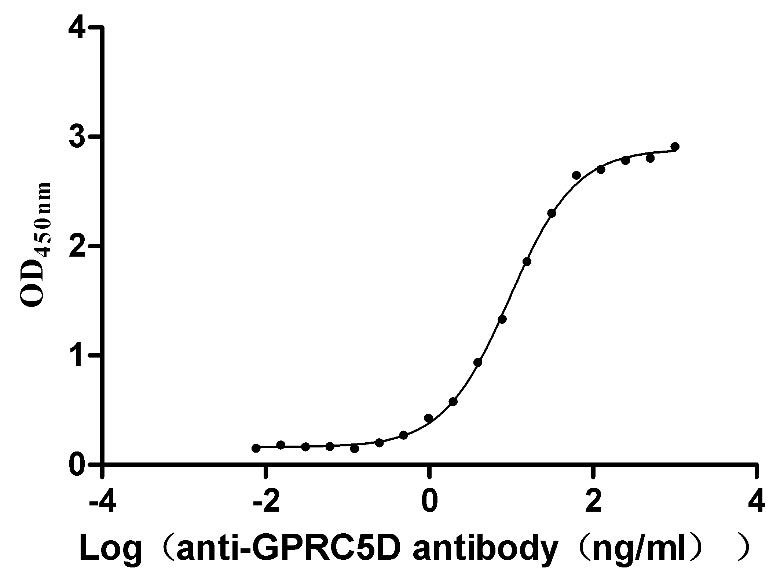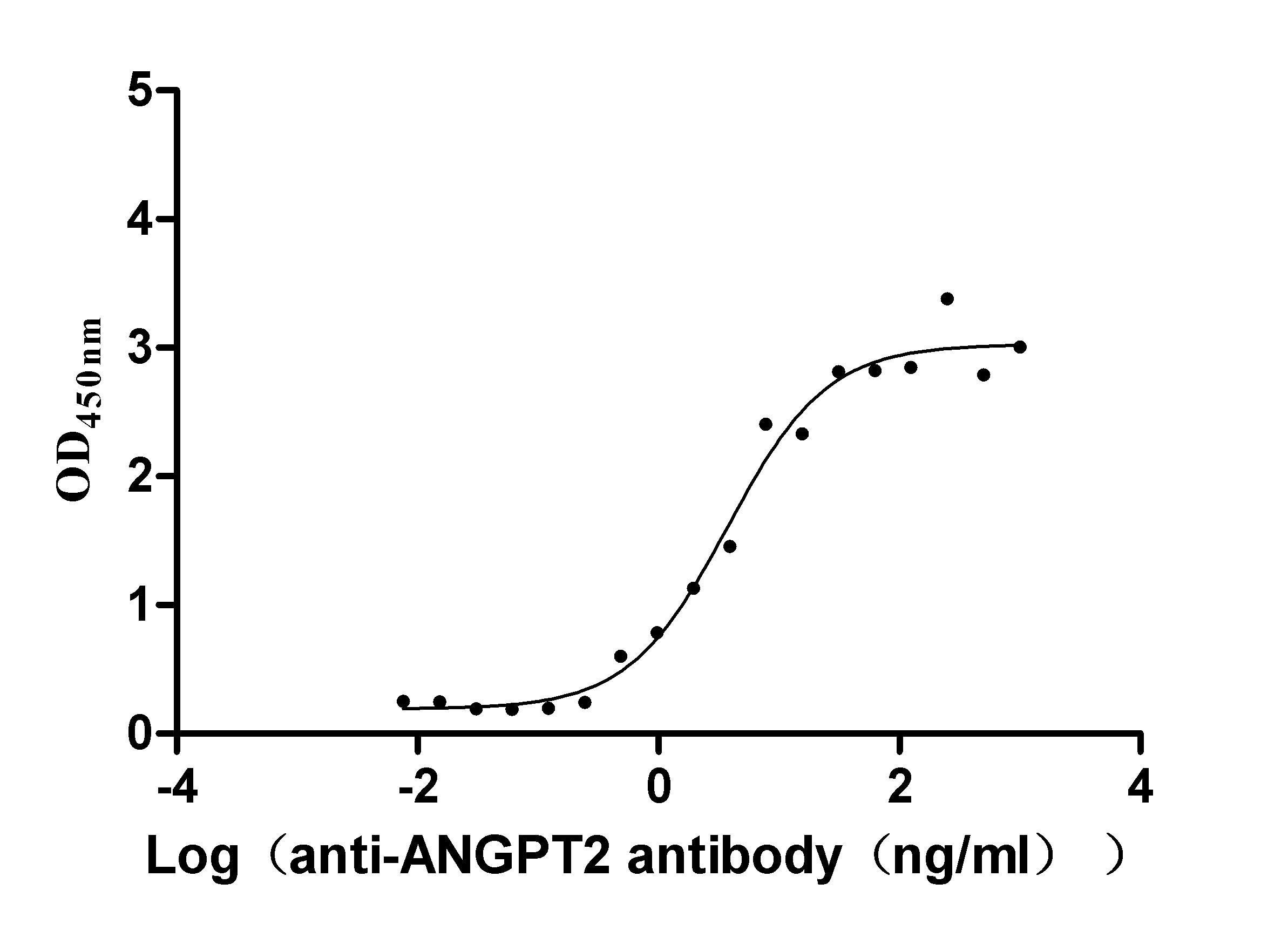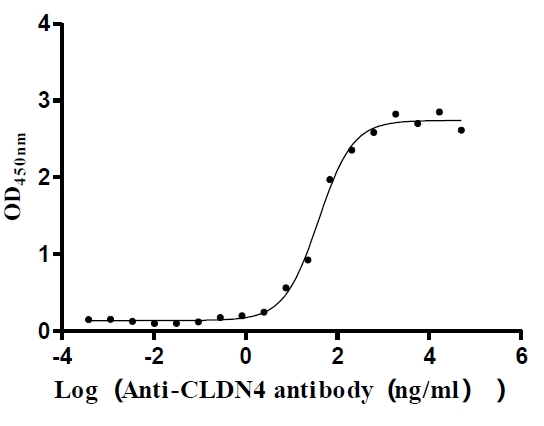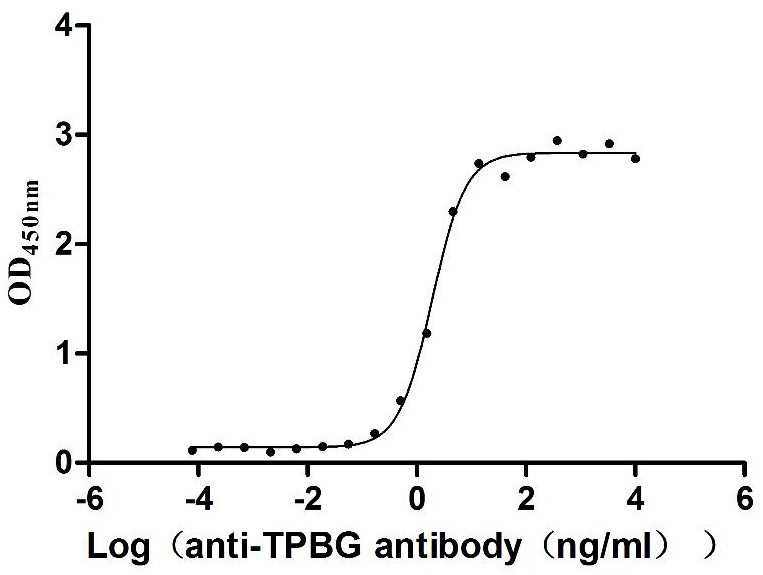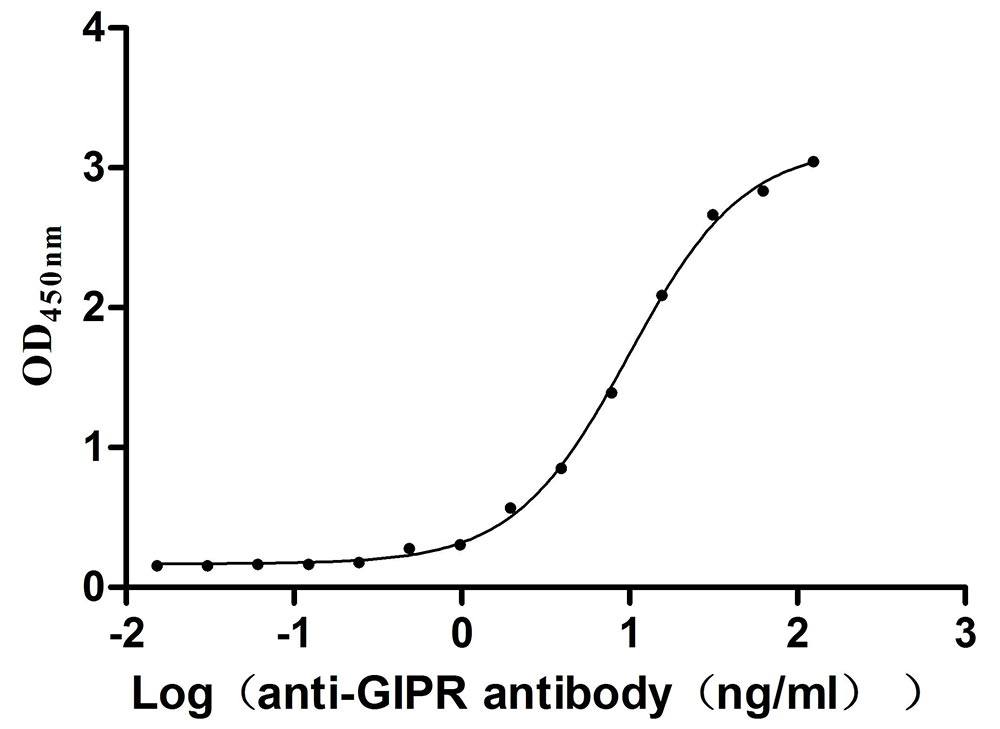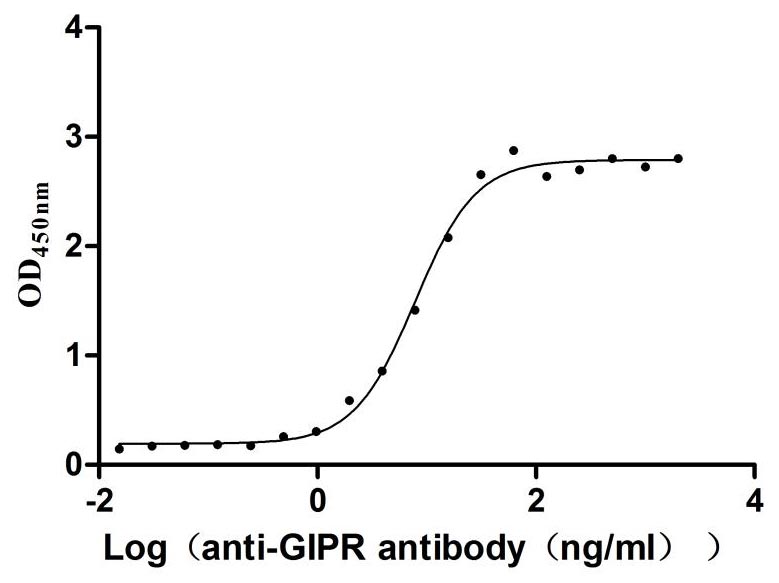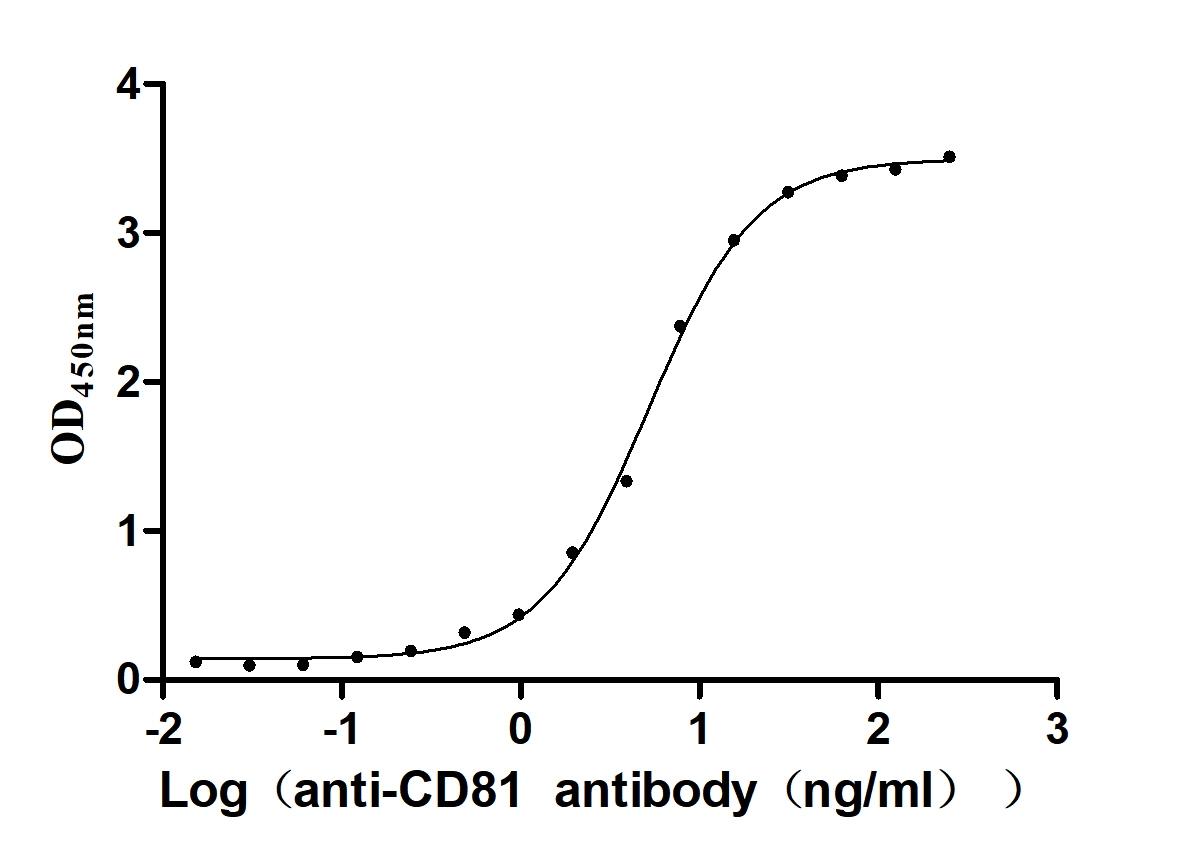Recombinant Mouse Antileukoproteinase (Slpi)
-
中文名称:小鼠Slpi重组蛋白
-
货号:CSB-YP021781MO
-
规格:
-
来源:Yeast
-
其他:
-
中文名称:小鼠Slpi重组蛋白
-
货号:CSB-EP021781MO
-
规格:
-
来源:E.coli
-
其他:
-
中文名称:小鼠Slpi重组蛋白
-
货号:CSB-EP021781MO-B
-
规格:
-
来源:E.coli
-
共轭:Avi-tag Biotinylated
E. coli biotin ligase (BirA) is highly specific in covalently attaching biotin to the 15 amino acid AviTag peptide. This recombinant protein was biotinylated in vivo by AviTag-BirA technology, which method is BriA catalyzes amide linkage between the biotin and the specific lysine of the AviTag.
-
其他:
-
中文名称:小鼠Slpi重组蛋白
-
货号:CSB-BP021781MO
-
规格:
-
来源:Baculovirus
-
其他:
-
中文名称:小鼠Slpi重组蛋白
-
货号:CSB-MP021781MO
-
规格:
-
来源:Mammalian cell
-
其他:
产品详情
-
纯度:>85% (SDS-PAGE)
-
基因名:Slpi
-
Uniprot No.:
-
别名:Slpi; Antileukoproteinase; ALP; Secretory leukocyte protease inhibitor
-
种属:Mus musculus (Mouse)
-
蛋白长度:Full Length of Mature Protein
-
表达区域:26-131
-
氨基酸序列GKNDA IKIGACPAKK PAQCLKLEKP QCRTDWECPG KQRCCQDACG SKCVNPVPIR KPVWRKPGRC VKTQARCMML NPPNVCQRDG QCDGKYKCCE GICGKVCLPP M
-
蛋白标签:Tag type will be determined during the manufacturing process.
The tag type will be determined during production process. If you have specified tag type, please tell us and we will develop the specified tag preferentially. -
产品提供形式:Lyophilized powder
Note: We will preferentially ship the format that we have in stock, however, if you have any special requirement for the format, please remark your requirement when placing the order, we will prepare according to your demand. -
复溶:We recommend that this vial be briefly centrifuged prior to opening to bring the contents to the bottom. Please reconstitute protein in deionized sterile water to a concentration of 0.1-1.0 mg/mL.We recommend to add 5-50% of glycerol (final concentration) and aliquot for long-term storage at -20℃/-80℃. Our default final concentration of glycerol is 50%. Customers could use it as reference.
-
储存条件:Store at -20°C/-80°C upon receipt, aliquoting is necessary for mutiple use. Avoid repeated freeze-thaw cycles.
-
保质期:The shelf life is related to many factors, storage state, buffer ingredients, storage temperature and the stability of the protein itself.
Generally, the shelf life of liquid form is 6 months at -20°C/-80°C. The shelf life of lyophilized form is 12 months at -20°C/-80°C. -
货期:Delivery time may differ from different purchasing way or location, please kindly consult your local distributors for specific delivery time.Note: All of our proteins are default shipped with normal blue ice packs, if you request to ship with dry ice, please communicate with us in advance and extra fees will be charged.
-
注意事项:Repeated freezing and thawing is not recommended. Store working aliquots at 4°C for up to one week.
-
Datasheet :Please contact us to get it.
靶点详情
-
功能:Acid-stable proteinase inhibitor with strong affinities for trypsin, chymotrypsin, elastase, and cathepsin G. Modulates the innate immune response after bacterial infection. Contributes to regulate the inflammatory and immune responses to the intracellular parasite L.major. Down-regulates responses to bacterial lipopolysaccharide (LPS). Plays a role in regulating the activation of NF-kappa-B and inflammatory responses. Has antimicrobial activity against mycobacteria, but not against salmonella. Contributes to normal resistance against infection by M.tuberculosis. Required for normal resistance to L.major. Required for normal wound healing, probably by preventing tissue damage by limiting protease activity. Together with ELANE, required for normal differentiation and proliferation of bone marrow myeloid cells.
-
基因功能参考文献:
- We demonstrate by silencing the SLPI gene, that SLPI negatively regulates human periodontal ligament cell expression of the pro-inflammatory cytokines IL-6 and MCP-1. PMID: 28597116
- MIF-2/D-DT is an early response cytokine in the I/R injury repair of the proximal tubule, enhancing regeneration through SLPI- and ATF4-dependent mechanisms. PMID: 28539339
- Slpi(-/-) mice had impaired collagen gene expression but animals demonstrated minimal reduction in lung fibrosis compared with wild-type animals. These data suggest that enhanced proteolysis does not further enhance TGF-beta activation, and inhibits sustained Col1alpha1, Col3alpha1, and Col4alpha1 gene expression following lung injury. PMID: 26974397
- Data show that differentiative switches between bronchiolar progenitors and club cells are under the Nrf2-mediated control of SLPI and syndecan 4. PMID: 26307669
- study identifies a distinct immune response in SA characterized by a dysregulated IFN-gamma/SLPI axis that affects lung function. PMID: 26121748
- Studied the function of Secretory Leukocyte Protease Inhibitor (SLPI) in odontoblast during mouse tooth development. PMID: 26328314
- Data show that the expression of several genes encoding salivary antimicrobial proteins, such as secretory leukocyte peptidase inhibitor (SLPI), S100A8, and lactotransferrin, was reduced due to myeloid differentiation dactor 88 (MyD88) deficiency. PMID: 25415419
- a possible role for SLPI in enhancing the metastatic behavior of breast cancer cell line 4T1 PMID: 25110884
- These studies define an important role for SLPI in innate and adaptive immunity and offer new insight into strategies for the use of this naturally occurring molecule in the modulation of infectious and inflammatory diseases. PMID: 25030421
- In experimental autoimmune encephalomyelitis, SLPI exerts potent pro-inflammatory actions by modulation of T-cell activity PMID: 22436018
- The results underscore the importance of SLPI as a modulator of specific immunity that can also function at peripheral sites under pathogenic pressure. PMID: 21112636
- SLPI has a role in wound healing and innate immunity PMID: 12526812
- Results suggest that secretory leukoprotease inhibitor (SLPI) attenuates excessive inflammatory responses and thus assures balanced functioning of innate immunity. PMID: 12615907
- a causal role for SLPI in the malignant behavior of cancer cells, underscoring the potential malignancy-promoting activities of SPIs PMID: 12732717
- Macrophages secrete an increased amount of SLPI when encountering apoptotic cells, which may help to attenuate potential inflammation during clearance of these cells. PMID: 12874244
- Gene augmentation of murine SLPI suggests a novel and extended anti-inflammatory role for this human neutrophil elastase inhibitor working as an effector of innate immunity to protect tissues against maladaptive inflammatory responses. PMID: 15034071
- SLPI is a pivotal endogenous factor necessary for optimal tissue repair including intra-oral wound healing PMID: 15269824
- SLPI localizes in part along the megakaaryocyte and platelet cytoskeleton by virtue of specific interactions with beta1 tubulin. PMID: 15315966
- Secretory leukocyte protease inhibitor has a role in cancer development PMID: 15650263
- Suppression of macrophage responses to bacterial lipopolysaccharide (LPS) by secretory leukocyte protease inhibitor (SLPI) is independent of its anti-protease function. PMID: 16112212
- Nramp1 controls macrophage secretory leukocyte protease inhibitor mRNA and protein expression, and can also have an important effect on the kinetics of wound healing. PMID: 16470178
- SLPI functions as a rheostat by controlling the level of bacterial stimuli that induce mucosal DC activation. As such, it regulates the quality of the ensuing Ag-specific immune response in the mucosa draining LN. PMID: 17982048
- Mouse SLPI is an essential component of innate host defense against mycobacteria at the respiratory mucosal surface. PMID: 18322212
- The expression of SP-A was significantly elevated in the lungs of cigarette smoke-exposed mice compared with air-exposed mice. PMID: 18699806
- is expressed temporally in infected odontoblasts and may participate in the anti-inflammatory response through NF-kappaB signaling PMID: 19567322
显示更多
收起更多
-
亚细胞定位:Secreted.
-
组织特异性:Detected in bronchial epithelial cells. Detected in bronchoalveolar fluid after infection with M.tuberculosis (at protein level). Highest expression in lung, spleen, intestine and epididymis with lower levels in liver and seminal vesicle. No expression in
-
数据库链接:
Most popular with customers
-
Recombinant Human Cytokine receptor common subunit beta (CSF2RB), partial (Active)
Express system: Mammalian cell
Species: Homo sapiens (Human)
-
Recombinant Human G-protein coupled receptor family C group 5 member D (GPRC5D)-VLPs (Active)
Express system: Mammalian cell
Species: Homo sapiens (Human)
-
Recombinant Dog Angiopoietin-2 (ANGPT2) (Active)
Express system: Mammalian cell
Species: Canis lupus familiaris (Dog) (Canis familiaris)
-
Recombinant Human Claudin-4 (CLDN4)-VLPs (Active)
Express system: Mammalian cell
Species: Homo sapiens (Human)
-
Recombinant Macaca fascicularis Trophoblast glycoprotein (TPBG), partial (Active)
Express system: Mammalian cell
Species: Macaca fascicularis (Crab-eating macaque) (Cynomolgus monkey)
-
Recombinant Mouse Gastric inhibitory polypeptide receptor (Gipr), partial (Active)
Express system: Mammalian cell
Species: Mus musculus (Mouse)
-
Recombinant Rat Gastric inhibitory polypeptide receptor (Gipr), partial (Active)
Express system: Mammalian cell
Species: Rattus norvegicus (Rat)
-
Recombinant Human CD81 antigen (CD81), partial (Active)
Express system: Mammalian cell
Species: Homo sapiens (Human)


